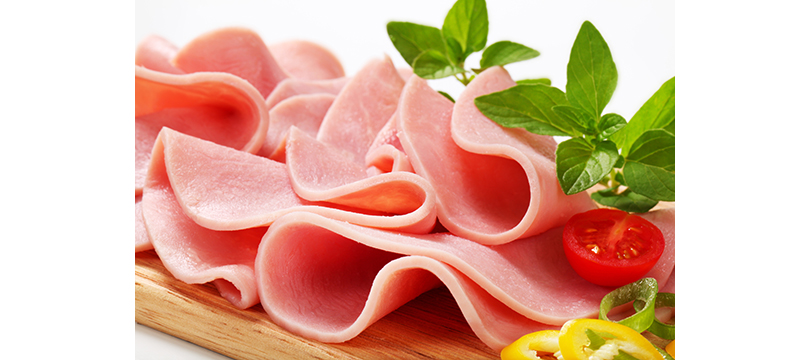Within the group of cooked meat products, the pathogenic microorganisms that cause the most concern for food poisoning due to their consumption are: Listeria monocytogenes, Salmonella spp., Campylobacter, Escherichia coli (E. coli).
To control them, it is key to control the critical points in their production (handling of raw materials, inactivation/elimination mechanisms, slicing operations and re-contamination). To do this, food industries follow different hygiene and handling practices. However, as an alternative or supplementary measure to all these control measures, non-thermal technologies can be used, highlighting among them high pressure processing.
In cooked ham, high pressure treatment is very effective because it allows the growth of spoilage microorganisms to be delayed/prevented, maintaining the counts considered adequate (<104 CFU/g) for 60 days and values acceptable (< 106 CFU/g) at least up to 90 days of conservation of the product, maintaining its characteristics of flavor, smell, texture and nutritional value.
Regarding pathogenic microorganisms (Enterobacteria, Escherichia coli, Staphylococcus aureus, Campylobacter, Listeria monocytogenes and Salmonella spp) they remain below the detection limit or their presence is not detected during 120 days of shelf life.

Fuente Avure.
Thanks to the increased shelf life, new markets can be reached, new products launched and returns reduced. Furthermore, with the application of the HPP, border restrictions are reduced, complying with the requirement of zero tolerance of Listeria from countries like the United States.
BIBLIOGRAFY
- Hereu A, Dalgaard P, Garriga M, Aymerich T, Bover-Cid S. Analysing and modelling the growth behaviour of listeria monocytogenes on RTE cooked meat products after a high-pressure treatment at 400MPa. International journal of food microbiology. 2014; 186:84-94.http://dx.doi.org/10.1016/j.ijfoodmicro.2014.06.020. doi: 10.1016/j.ijfoodmicro.2014.06.020.
- Hugas M, Garriga M, Monfort JM. New mild technologies in meat processing: High pressure as a model technology. Meat science. 2002;62(3):359 371. https://www.sciencedirect.com/science/article/abs/pii/S0309174002001225. doi: 10.1016/S0309-1740(02)00122-5.
- Heredia N, Dávila-Aviña JE, Solís Soto L, García S. Meat products: Main pathogens and non-thermal control strategies. Nacameh (Mexico). 2014;8(2):20-42. doi: 10.24275/uam/izt/dcbs/nacameh/2014v8s1/Heredia.
- Simonin H, Duranton F, de Lamballerie M. New insights into the High‐Pressure processing of meat and meat products. Comprehensive reviews in food science and food safety. 2012;11(3):285-306. https://onlinelibrary.wiley.com/doi/full/10.1111/j.1541-4337.2012.00184.x doi: 10.1111/j.1541-4337.2012.00184.x.
- Garriga Turón M, Hugas M, Aymerich Calvet MT, Beltrán Villanueva Y. Efecto de las altas presiones sobre la composición nutricional de los productos cárnicos y sobre la evolución microbiológica de los mismos durante su vida comercial. . 2007. https://recercat.cat/handle/2072/4767.
For more information and references, consult our experts by phone 914912844 or by e-mail quality-tecnologia@idro.es




